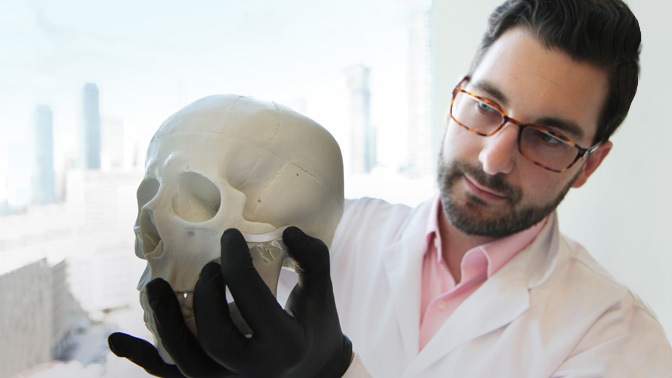
Break a bone, get a cast—every child in the schoolyard knows how it works.
However, some broken bones need more than just a cast: metal plates, screws or pins might be used to hold the pieces of bone together until they can heal. But the thin, complex bones of the head and face are not well-suited to the same approach used in your arms and legs.
A team including Techna Senior Scientist Dr. Paul Santerre developed a flexible tape-based support system called BoneTape, which was recently featured in The Varsity.
Dr. Santerre’s research helped to identify the best materials to make the tape biocompatible so that it performed as expected inside the body and did not have any toxic effects.
A key property of BoneTape is that it is translucent, allowing the surgeons to see the fracture site and confirm that the tape is holding the bones in the proper alignment. BoneTape is also easier to use than metal plates, which must be carefully bent and aligned in complex shapes and need tiny screws to be fixed to bones.
The team also designed BoneTape to be bioresorbable—this property enables the tape to dissolve in the body over a period of many months, eliminating the need for follow-up surgeries to remove it.
Ultimately, these benefits provide BoneTape with the potential to greatly improve speed and efficiency in the operating room, while reducing the need for follow-up surgery. It is now being commercialized through Cohesys, led by Dr. Michael Floros, a post-doctoral fellow in the lab. Dr. Floros was recently in the US for Oregon’s New Venture challenge—a competition in which Cohesys received the top prize.
To watch a video of Dr. Floros explaining the technology, click here.
With thanks to The Varsity for the story by Viabhav Bhandari. P Santerre holds the Baxter Chair of Health Technology and Commercialization.




